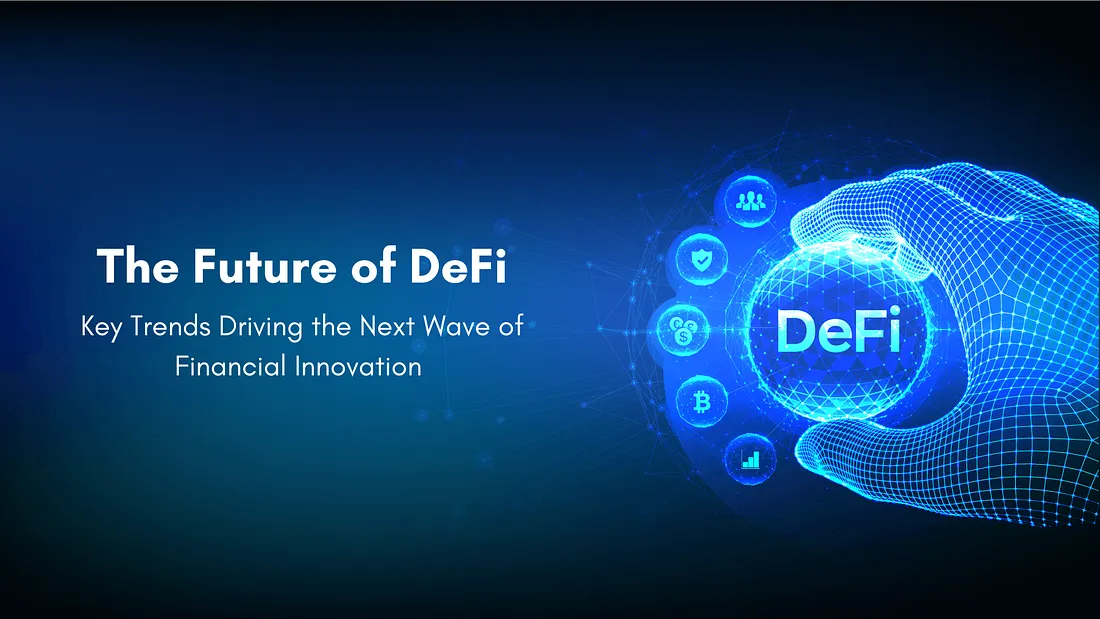DeFi is not the end of traditional finance — it’s the beginning of a new financial era powered by technology, transparency, and trust.
The global financial system is evolving faster than ever — and Decentralized Finance (DeFi) is at the heart of this transformation. Once seen as a niche blockchain experiment, DeFi has now become a multi-billion-dollar industry redefining how people lend, borrow, trade, and earn — all without banks or intermediaries.
But the question remains: Is DeFi the next revolutionary financial technology, or simply another passing trend in the crypto world?
Understanding the Core of DeFi Technology
At its essence, DeFi (Decentralized Finance) is about rebuilding traditional financial systems — lending, investing, and trading — using blockchain technology and smart contracts instead of centralized institutions.
It eliminates the need for third-party control and gives users complete transparency, accessibility, and ownership of their assets.
Key technological advantages of DeFi include:
- 24/7 Global Access: No borders, no bank holidays — only the internet and a crypto wallet are needed.
- Smart Contract Automation: Code executes transactions automatically without human interference.
- Composability: Multiple protocols can integrate like building blocks for advanced financial strategies.
- Transparency: Every transaction is traceable and verifiable on the blockchain.
In short, DeFi empowers users with control, but this freedom also comes with complexity and responsibility.

Innovations Driving the DeFi Ecosystem
The trend of DeFi development has introduced groundbreaking tools that challenge the very definition of finance:
- Automated Market Makers (AMMs): Enable trading without centralized order books.
- Flash Loans: Borrow huge sums instantly without collateral.
- Yield Farming: Combine multiple protocols to maximize earnings.
- Liquidity Pools: Allow users to provide capital and earn transaction fees.
These innovations are not theoretical; they represent real, functioning alternatives to traditional banking.
Challenges Slowing Down Mass Adoption
Despite its promise, DeFi still faces major technological and regulatory challenges that limit its mainstream potential:
- High Transaction Fees: Ethereum gas costs can make small trades impractical.
- Security Risks: Smart contract vulnerabilities have caused millions in losses.
- Complex Interfaces: Ordinary users often find DeFi tools confusing.
- Regulatory Uncertainty: Lack of clear frameworks creates legal risk.
- Market Volatility: Sudden liquidations and “whale” manipulation remain common.
Even though auditing and testing are improving, the lack of centralized oversight means users must take personal responsibility for their investments.
Speculative Hype vs. Sustainable Innovation
Much of DeFi’s explosive growth has been fueled by token-based rewards and high yields — mechanisms that often prove unsustainable.
When incentives drop, users migrate elsewhere, triggering boom-and-bust cycles.
However, amid the hype, real financial innovation is emerging. DeFi now powers:
- Cross-border payments that bypass slow, expensive remittance systems.
- Decentralized exchanges (DEXs) generating steady trading fee revenue.
- Lending protocols that mimic banking interest spreads.
- Access to finance for the unbanked and underbanked populations.
These examples show that DeFi can deliver tangible economic value, not just speculative profit.
The Future: Integration, Not Replacement
DeFi isn’t here to destroy traditional finance — it’s here to evolve it.
Future trends indicate that hybrid models will emerge, blending decentralization with the regulatory structure of traditional institutions.
Potential integration paths include:
- Banks offering DeFi-based investment products.
- Governments developing CBDCs (Central Bank Digital Currencies) with DeFi features.
- Institutional custody services bridging crypto and traditional assets.
- Cross-chain technologies enabling universal interoperability.
As technology matures, user education and simplified interfaces will drive the next wave of adoption — making DeFi accessible to everyone, not just tech experts.
Conclusion: A Lasting Revolution in Motion
While some critics dismiss DeFi as a temporary bubble, the underlying technology trend tells another story.
Like the internet in its early days, DeFi is imperfect but full of transformative potential.
It represents more than speculation — it’s a movement toward financial independence, global accessibility, and open innovation.
Whether it remains a trend or becomes a cornerstone of the next financial era depends on how the industry addresses its risks and builds sustainable, trust-based systems.














One thought on “DeFi Technology: The Future of Finance or Just Another Trend?”